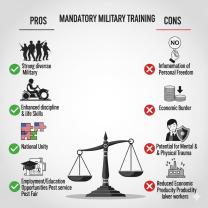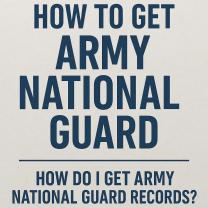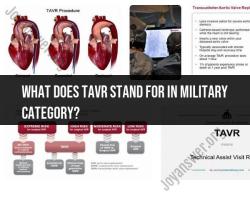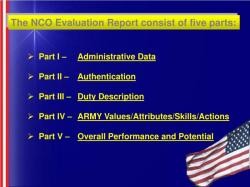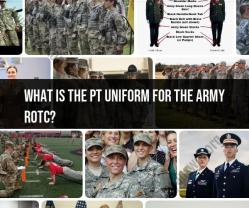What is the purpose of the OPNAVINST?
The acronym "OPNAVINST" stands for "Office of the Chief of Naval Operations Instruction." These instructions are official documents issued by the Chief of Naval Operations (CNO) within the United States Navy. OPNAVINSTs serve as authoritative directives that convey policies, procedures, and guidance for the operation and administration of the U.S. Navy.
The purpose of OPNAVINST is to provide detailed instructions and information to Navy personnel regarding various aspects of naval operations, management, training, and other important matters. These instructions help standardize procedures, promote uniformity across the Navy, and ensure compliance with regulations and policies. OPNAVINSTs cover a wide range of topics, including:
Operational Procedures: Guidelines for conducting naval operations, including tactics, techniques, and procedures.
Personnel Policies: Instructions related to the management of Navy personnel, including recruitment, training, promotions, assignments, and career development.
Training and Readiness: Procedures and requirements for maintaining the readiness of naval forces through training and exercises.
Administrative Processes: Guidance on administrative matters, such as record-keeping, reporting, and organizational structure.
Safety and Security: Policies and procedures related to safety, security, and risk management within the Navy.
Logistics and Supply: Instructions on logistics and supply chain management to support naval operations.
Equipment and Maintenance: Guidance on the maintenance, repair, and use of naval equipment and systems.
Compliance with Regulations: Ensuring that Navy activities comply with relevant laws, regulations, and international agreements.
OPNAVINSTs are part of a broader system of directives, instructions, and publications that govern the U.S. Navy's operations. They are typically numbered sequentially, with each number corresponding to a specific instruction. For example, OPNAVINST 3500.39C might refer to the 39th instruction issued in a specific series related to a particular topic.
It's important for Navy personnel to be familiar with and adhere to OPNAVINSTs relevant to their duties and responsibilities. These instructions play a crucial role in maintaining discipline, efficiency, and consistency throughout the Navy's operations. Additionally, OPNAVINSTs are subject to periodic updates and revisions to reflect changes in policies, technology, and strategic priorities.
The definition and purpose of an OPNAVINST, which is a type of instruction or directive issued by the OPNAV office
An OPNAVINST, or Office of the Chief of Naval Operations Instruction, is a type of official instruction or directive issued by the Office of the Chief of Naval Operations (OPNAV) within the United States Department of the Navy. OPNAVINSTs are designed to establish and communicate policies, procedures, and guidelines for the operation and activities of the U.S. Navy. They serve as authoritative guidance for Navy personnel, ensuring consistency and standardization across the entire Navy enterprise.
The process for developing, reviewing, and issuing OPNAVINSTs
The process for developing, reviewing, and issuing OPNAVINSTs is rigorous and involves multiple stages:
Initiation: A need for a new or revised OPNAVINST is identified, typically by Navy staff or subject matter experts, to address a specific issue or implement a policy change.
Drafting: A draft OPNAVINST is prepared by a working group of Navy staff with expertise in the relevant area. The draft is carefully reviewed to ensure accuracy, clarity, and adherence to applicable Navy policies and regulations.
Legal Review: The draft OPNAVINST undergoes a thorough legal review to ensure compliance with federal laws, Navy regulations, and Department of Defense directives.
Interagency Coordination: If the OPNAVINST affects other Navy commands or Department of Defense agencies, it undergoes interagency coordination to ensure alignment and avoid conflicts.
Command Review and Approval: The draft OPNAVINST is reviewed by the appropriate Navy command for approval, often involving multiple levels of review within the command structure.
Issuance: Once finalized and approved, the OPNAVINST is officially issued and becomes effective. It is assigned a unique number and date of issuance.
The different types of OPNAVINSTs and their specific applications
OPNAVINSTs encompass a wide range of topics and serve various purposes within the U.S. Navy. Some common types of OPNAVINSTs include:
Policy OPNAVINSTs: These instructions establish broad policies and principles that guide the overall operation and direction of the Navy.
Procedural OPNAVINSTs: These instructions outline specific steps and procedures for carrying out Navy policies, ensuring consistent and standardized practices across the fleet.
Technical OPNAVINSTs: These instructions provide detailed guidance for technical matters, such as equipment operation, maintenance procedures, or safety protocols.
Organizational OPNAVINSTs: These instructions define the structure, responsibilities, and functions of Navy organizations, ensuring clear lines of authority and accountability.
Personnel OPNAVINSTs: These instructions address personnel matters, such as assignment procedures, training requirements, or benefits policies.
The importance of adhering to OPNAVINSTs to ensure standardized practices and procedures within the U.S. Navy
Adherence to OPNAVINSTs is crucial for maintaining consistency, standardization, and effectiveness within the U.S. Navy. These instructions provide a framework for standardized practices across the fleet, ensuring that Navy personnel operate in a unified and coordinated manner. By following OPNAVINSTs, the Navy can achieve mission success, maintain operational readiness, and uphold its commitment to safety and quality.
The methods for accessing and disseminating OPNAVINSTs to relevant personnel
OPNAVINSTs are publicly accessible through the Navy's official website and online resources. Navy personnel can also access OPNAVINSTs through the internal Navy network and electronic distribution systems. Additionally, Navy commands regularly disseminate new or revised OPNAVINSTs to relevant personnel through email updates, training sessions, and command publications.



